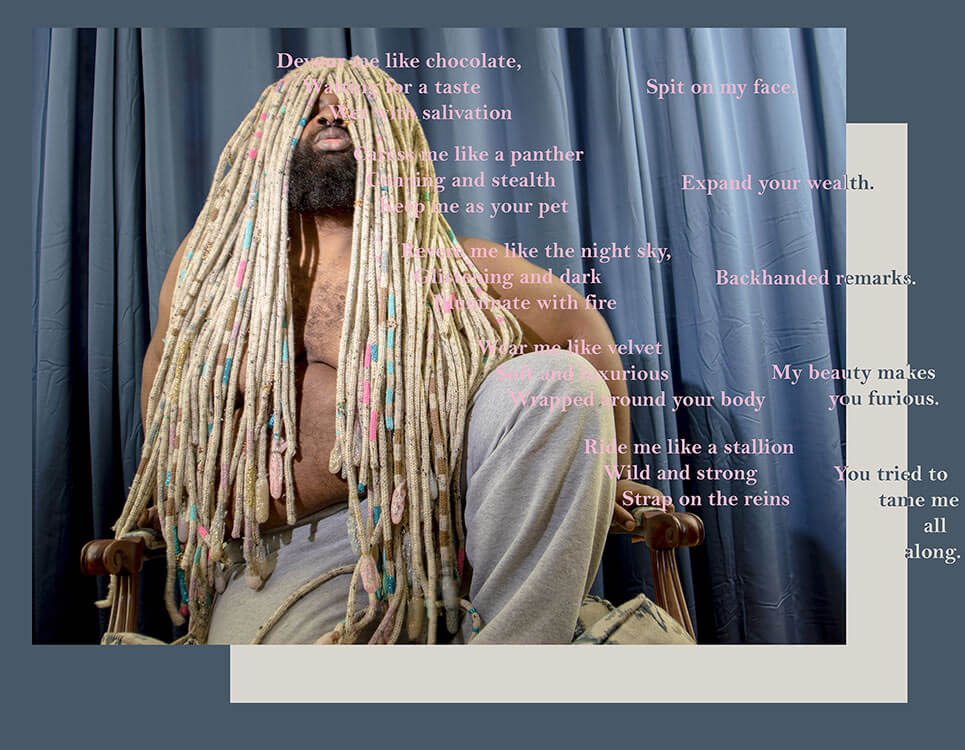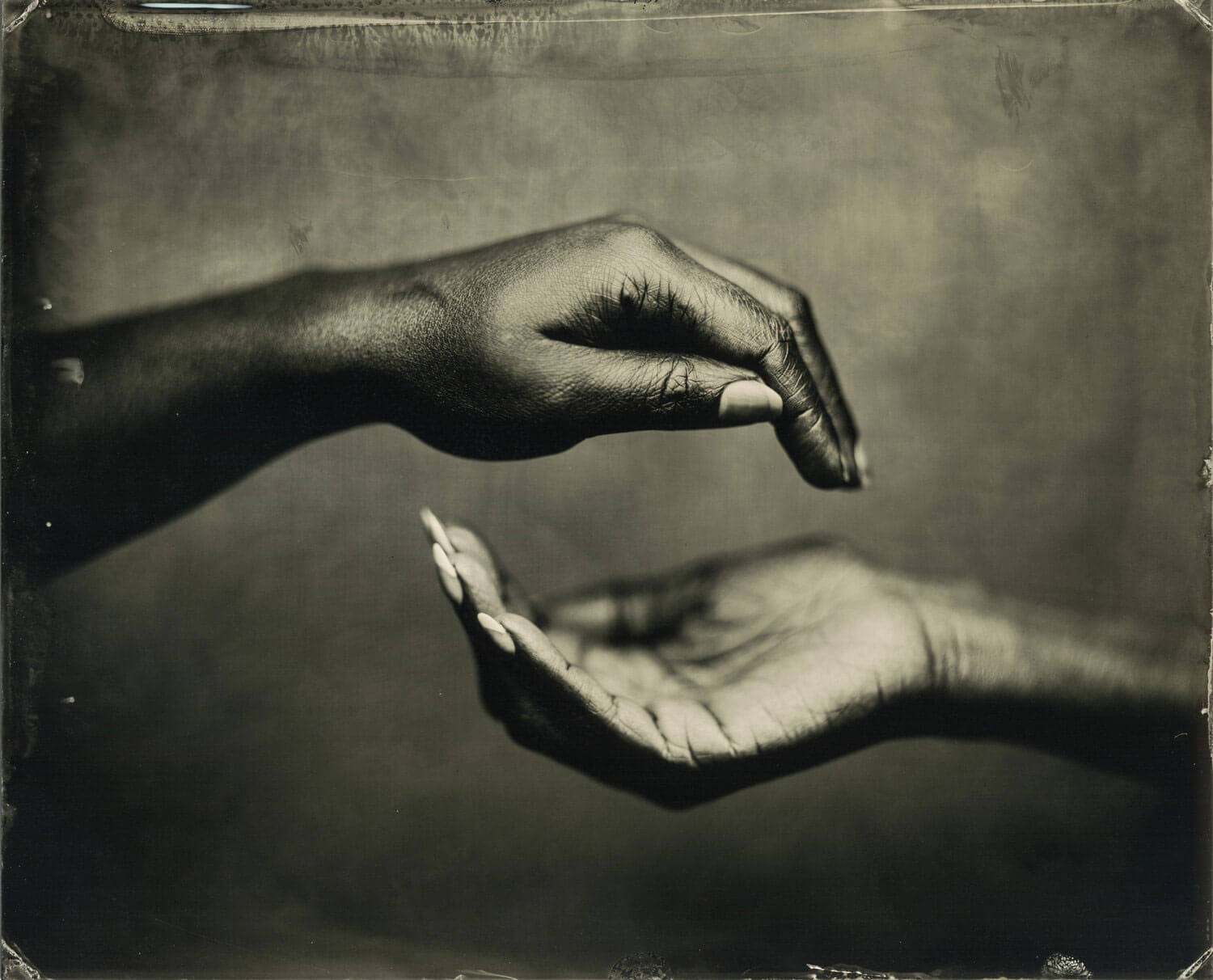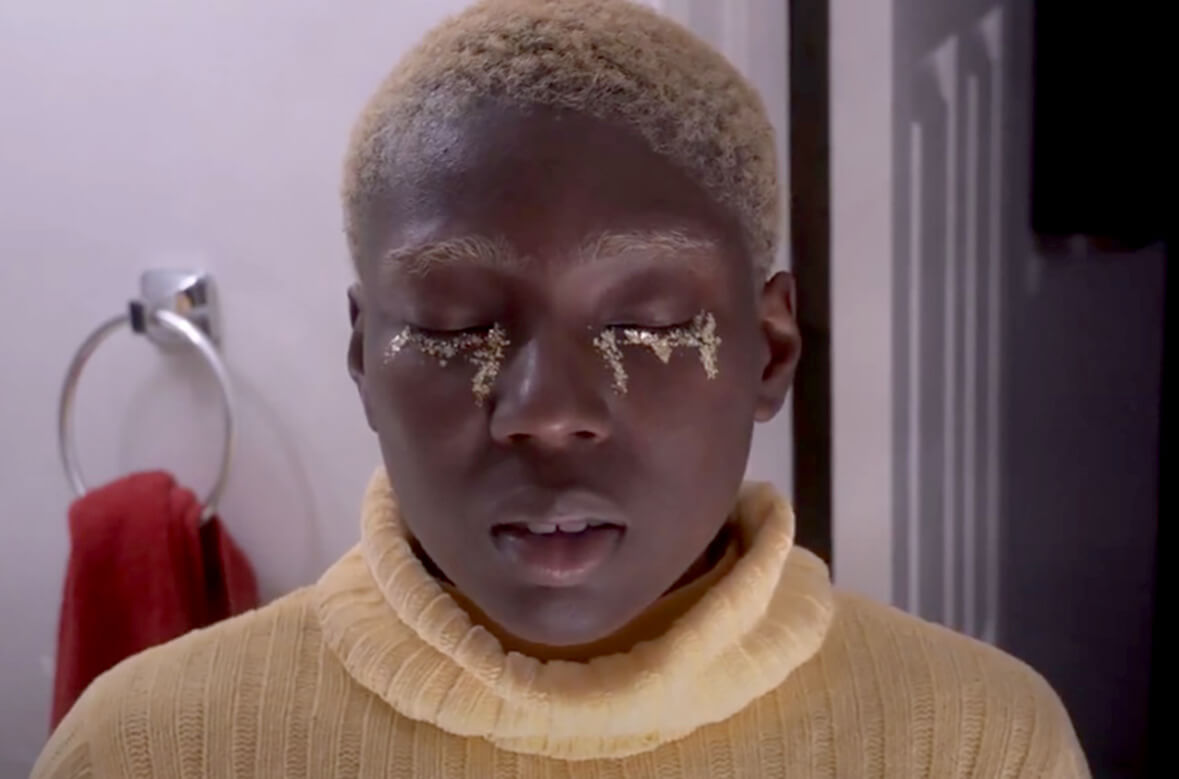- February 08, 2021
- By Sala Levin ’10
A video still of a young Black woman, eyes sparkling with gold embellishment. A pair of hands. A wild mane of textiles. Each of these signifies different elements of Black femininity in a new exhibit opening today in the University of Maryland’s Stamp Gallery.
“In Focus: Representations of Black Womanhood,” on display in-person today through March 27, features ten pieces by three young artists exploring what it means to identify as a Black woman in 2021. Themes include family, mental health, cultural expectations and diversity within what’s sometimes perceived to be a monolithic category.
Curator Brianna Nuñez M.A. ’22, MLS ’22 hopes the show will be a counterbalance to gallery and museum shows frequently dominated by white artists and subjects. “I knew, as a woman of color, that those specific demographics are often underrepresented in the art world,” she said. “I really wanted to in some way showcase artists of color or works depicting subjects of color.”
Hoping to highlight emerging artists, and unable to visit galleries for inspiration as freely as she could pre-pandemic, Nuñez began searching online for creators “whose artwork spoke to me,” she said. UMD graduate and spoken word artist/filmmaker Sadia Alao ’21, photographer and visual journalist Akea Brionne Brown, and textile artist André Terrel Jackson “aligned” with Nuñez’s vision, she said.
Here, see some of the pieces on display in “In Focus.”
 André Terrel Jackson, “Body Study Ego,” Silicone, metal washers, yarn, acrylic paint, glitter and hair, 2018
André Terrel Jackson, “Body Study Ego,” Silicone, metal washers, yarn, acrylic paint, glitter and hair, 2018
A mélange of textiles and even tiny bells make their way into New Jersey-based artist André Terrel Jackson’s headpieces, three of which are on display in the exhibit, along with several photographs. Jackson, who identifies as nonbinary, uses the array of materials to “capture the complexity of themselves as represented through hairstyles,” said Nuñez. Black womanhood is no one thing in Jackson’s work, reflecting cultural and societal changes. “What ‘womanhood’ looked like 100 years ago, or the generation before us, is not necessarily how it looks and conducts itself in 2021,” said Nuñez.
 Akea Brionne Brown, “Revolving Points,” collodion print on archival Inkjet paper, 24” x 20,” 2019
Akea Brionne Brown, “Revolving Points,” collodion print on archival Inkjet paper, 24” x 20,” 2019
In this image, Baltimore-based photographer Akea Brionne Brown’s own hand and her mother’s come close to completing a full circle. This photograph comes from Brown’s collection, “An Archive of Her/Our Own,” in which she makes images of herself with family members. Brown’s work often explores the role of familial relationships in Black women’s lives, said Nuñez, including the support, motivation, inspiration and interdependence of these ties.
 Sadia Alao ’21, “Black Girl Bitter,” digital video, 2020
Sadia Alao ’21, “Black Girl Bitter,” digital video, 2020
In “Black Girl Bitter,” a filmed spoken word poem by UMD graduate Sadia Alao, the artist addresses the issue of mental health among young Black women. Alao’s work acknowledges that Black women are often depicted in media and art as the pillars of their communities, sources of resolute strength. Here, she “demands” that Black women “deserve the same grace to learn and grow and overcome without undue expectations of heroism,” said Nuñez.
Topics
Arts & CultureTags
Visual Arts